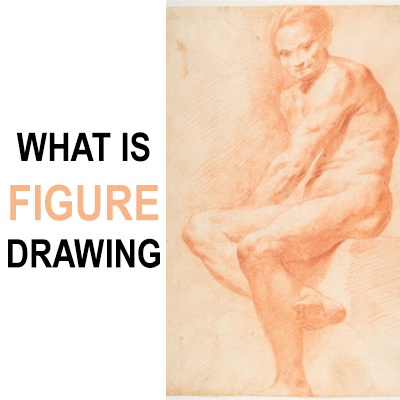
O que vem à sua mente quando você pensa em desenho de figuras?
Você pode imaginar artistas com blocos de rascunho e lápis circulando em torno de um modelo.
Mas o que é desenho de figuras, exatamente? E por que é uma habilidade tão essencial para todos os artistas aprenderem?
Nesta postagem, exploraremos o desenho de figuras e seus benefícios. Também compartilharemos dicas para aprimorar suas habilidades de desenho de figuras.
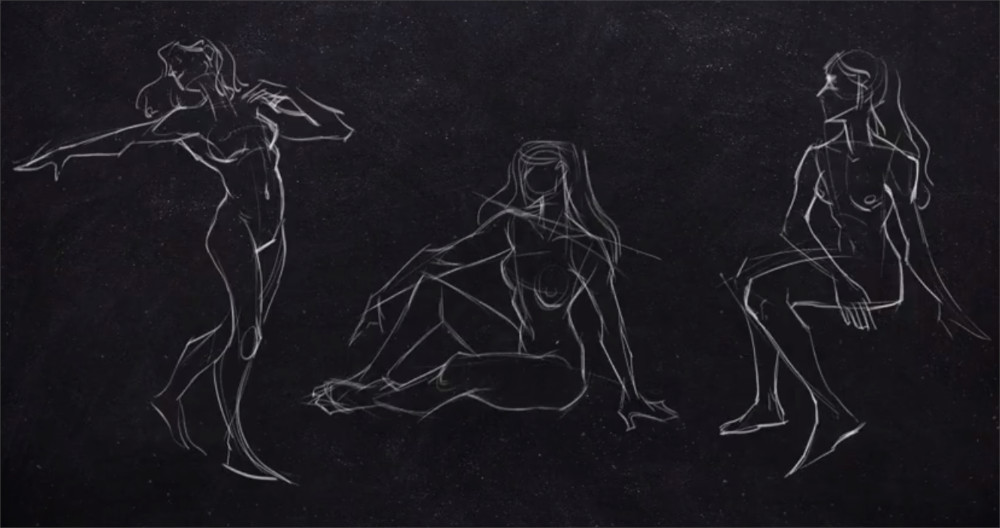
O desenho de figuras, também conhecido como desenho de vida, é a arte de representar com precisão a figura humana por meio do desenho. Geralmente é feito em um ambiente ao vivo, com um modelo tradicionalmente nu. No entanto, também pode ser feito a partir da memória ou de referências fotográficas.
O objetivo final do desenho de figuras é capturar a essência do corpo humano – seus músculos, textura, posturas e movimentos.
Envolve o domínio de proporções, ângulos e outros detalhes.
O desenho de figuras é uma ótima maneira de aprender sobre estrutura e anatomia. Ele pode ajudar os artistas a desenvolver uma compreensão da forma e do formato.
Além disso, o desenho de figuras ajuda a cultivar habilidades de observação que podem ser aplicadas a outras formas de arte.
O desenho de figuras tem sido fundamental para o treinamento de artistas desde a Renascença. A prática do desenho de figuras é essencial para a compreensão do movimento humano e das complexidades das formas.
O desenho de figuras exige que o artista observe a figura em detalhes, prestando atenção à proporção, à forma e ao movimento.
Com o desenho de figuras, os artistas aprendem a observar e registrar a figura humana com precisão por meio do desenho. Eles também aprendem a decompor o que veem em suas partes.
Isso melhora sua capacidade de olhar para os objetos de diferentes perspectivas e observá-los com precisão.
O desenho de figuras ajuda o artista a aprender a capturar ação, movimento e emoção em seus desenhos.
Eles aprendem a prestar atenção às nuances sutis do movimento e do gesto da figura. Isso lhes permite representar com precisão a figura em movimento, bem como criar poses dinâmicas que causam um impacto emocional no espectador.
Ao praticar o desenho de figuras, os artistas também podem aprender a usar linhas e formas para criar uma sensação de movimento e energia. Desenhar a partir da vida é uma das melhores maneiras de capturar figuras em movimento, pois permite que você observe os movimentos da figura diretamente.
O desenho de figuras também é uma ótima maneira de entender a anatomia humana. Ao esboçar uma figura, os artistas identificam as formas subjacentes dos músculos e ossos que compõem o corpo de uma figura.
Ao estudar essas formas, os artistas podem entender como a figura se move e como as diferentes partes do corpo interagem.
Essa compreensão da anatomia, combinada com técnicas de desenho de figuras, pode ajudar a dar vida e realismo ao trabalho de um artista.
Através do desenho de figuras, os artistas aprendem como formas básicas como ovais, círculos e retângulos se encaixam para formar um corpo humano.
Essas formas podem ser usadas como blocos de construção para criar desenhos de figuras com poses de ação mais intensas.
Ao dominar essas formas, os artistas podem criar uma estenografia visual que os ajuda a esboçar rapidamente as poses das figuras.
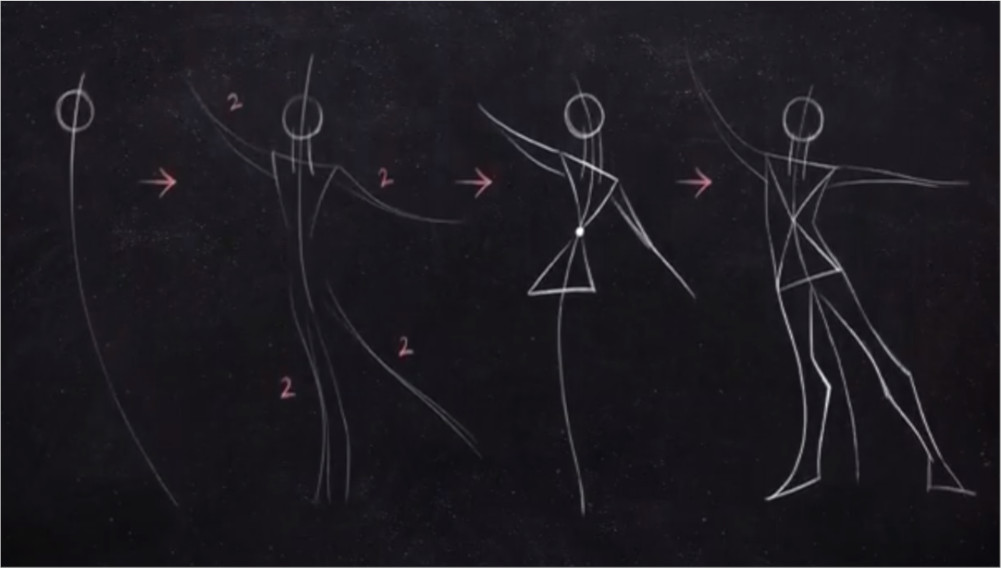
Aprender a desenhar figuras corretamente é essencial para criar obras de arte realistas. Embora o desenho de figuras possa inicialmente parecer intimidador, com prática e paciência, ele se torna muito mais fácil.
Aqui estão algumas dicas para desenhar figuras com eficiência:
Comece esboçando uma estrutura baseada em figuras que servirá como guia. Isso significa desenhar um boneco de palito ou uma estrutura óssea da figura que você está tentando desenhar e prestar atenção às proporções e aos ângulos.
Tente usar linhas claras que possam ser apagadas ou alteradas posteriormente, se necessário. Certifique-se de que a figura esteja proporcionalmente alinhada corretamente antes de passar para a próxima etapa.
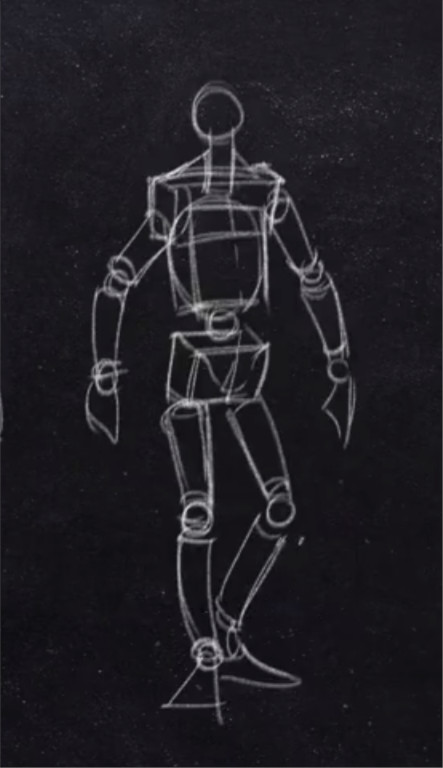
Depois de estabelecer a estrutura da figura, adicione volume esboçando formas simples, como círculos e ovais. Concentre-se nos elementos individuais da figura e desenhe-os um de cada vez.
Você pode começar desenhando formas básicas para a cabeça, o tronco, os braços e as pernas da figura. Considere o tamanho, a forma e a localização de cada elemento para criar uma figura anatomicamente correta.
Essas formas funcionarão como base para os músculos e ajudarão a criar o contorno da figura humana.
Depois de estabelecer a estrutura da figura e adicionar formas básicas, comece a delinear a figura. Isso significa desenhar uma figura que tenha uma forma mais realista, com curvas e contornos naturais.
Preste atenção ao movimento e à anatomia da figura enquanto desenha para transmitir sua forma e textura com precisão.
Ao delinear o corpo da figura, você pode criar o nível de detalhes necessário para fazer com que a figura pareça realista.
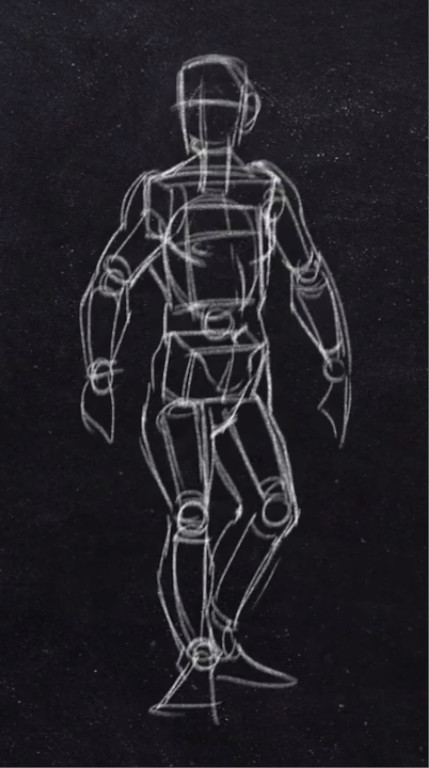
Agora que você estabeleceu a estrutura e o contorno da figura, é hora de trabalhar em seus músculos.
Observe os músculos da figura, prestando atenção em como eles interagem uns com os outros e como eles mudam quando a figura se move. Isso o ajudará a criar uma figura realista e anatomicamente precisa.
Ao representar com precisão a anatomia da figura, você pode criar poses dinâmicas com um impacto emocional no espectador. Você também pode estudar livros de anatomia para obter inspiração e referência.
Ao estudar a anatomia humana e esboçar os músculos, você pode criar desenhos de figuras que realmente ganham vida.
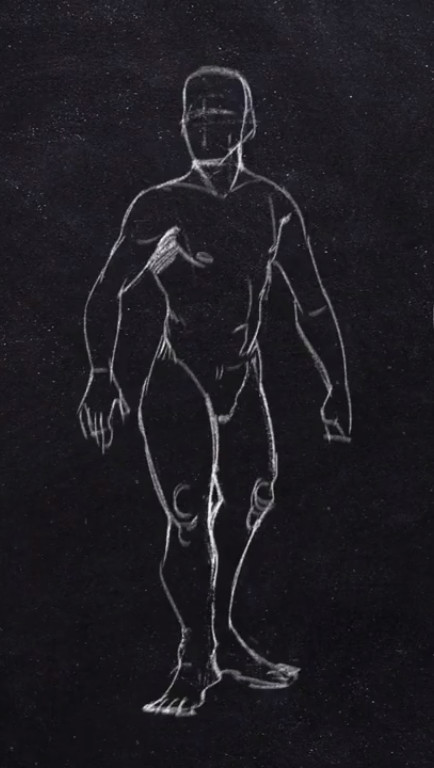
A figura está quase completa. Agora é hora de dar vida à figura adicionando detalhes.
Comece adicionando sombreamento e textura para dar profundidade e dimensão à figura. Observe como as sombras caem sobre a figura quando ela se move e como a luz afeta seu formato e forma.
Você também pode adicionar detalhes como rugas, expressões faciais, cabelos e acessórios. Esses detalhes podem ajudar a dar vida à figura e torná-la mais realista.
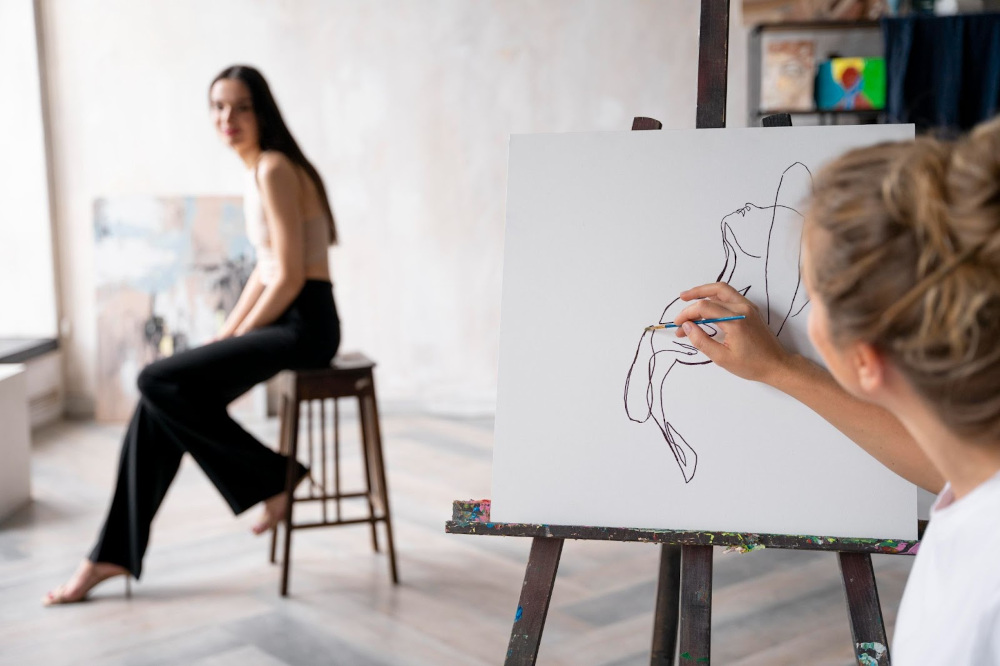
Uma aula de desenho de figura ou desenho de vida normalmente envolve um grupo de artistas que desenham figuras humanas a partir de um modelo vivo.
O modelo geralmente é posicionado no centro da sala, e os artistas o cercam. Cada artista desenha a figura de um ângulo diferente.
O modelo assume várias poses durante a sessão, variando de gestos curtos a poses sustentadas mais longas.
Os artistas capturam a essência da figura em seus esboços, prestando muita atenção às proporções, à forma e ao movimento.
As aulas de desenho de figuras geralmente são estruturadas com aquecimento seguido de trabalho com figuras e, finalmente, uma crítica no final.
Durante toda a sessão de desenho de figuras, os instrutores estão presentes para fornecer orientação e demonstrações de técnicas que os alunos podem usar para melhorar seus desenhos de figuras.
No final de cada aula de desenho de figuras, os alunos compartilham seus trabalhos com os colegas e recebem feedback construtivo do instrutor.
As aulas geralmente duram de 2 a 3 horas.
As aulas de desenho de figuras são uma excelente oportunidade para explorar o corpo humano em diferentes formas, adquirir habilidades técnicas de desenho de figuras e se envolver com outros artistas.
Melhorar suas habilidades de desenho de figuras pode ser um desafio. No entanto, você pode dominar a arte do desenho de figuras com foco, dedicação e prática.
Aqui estão sete dicas para ajudá-lo a melhorar suas habilidades de desenho de figuras:
Antes de mergulhar em um desenho de figura, reserve um tempo para examinar a figura que você desenhará. Anote o tamanho, a forma e a estrutura da figura. Isso o ajudará a criar um desenho de figura mais preciso.
Não desenhe a figura como você imagina que o corpo humano seja. Em vez disso, concentre-se em desenhar o que você vê. Visualize o que você vê, considerando todos os ângulos e sombras para tornar o desenho da figura o mais preciso possível.
Embora a precisão do desenho de figuras seja importante, o desenho de figuras precisa capturar o movimento e a fluidez da figura.
Portanto, em vez de se enrijecer ao começar a desenhar figuras, concentre-se no gesto da figura. Mesmo que o desenho da figura não seja preciso, preste mais atenção à ação da pose do que à precisão. Isso o ajudará a criar desenhos de figuras que sejam verdadeiramente vivos.
Apagar pode ser tentador ao desenhar figuras, mas resistir a esse impulso é essencial. Apagar chama sua atenção para os erros e o distrai do processo criativo.
Ignore isso e continue desenhando. Mesmo que o desenho da figura não esteja perfeito, é essencial continuar. Isso o ajudará a melhorar sua capacidade de capturar a vida no papel.
É importante desenhar a figura completa enquanto estiver praticando. Evitar partes difíceis do corpo, como mãos ou pés, pode ser tentador, mas isso só piorará essas áreas.
Isso pode levar a desenhos de figuras com figuras altamente renderizadas e realistas, mas com blocos para pés e mãos. É por isso que desenhar a figura completa é importante, mesmo que o resultado não seja perfeito.
A adição de sombras e destaques a desenhos de figuras pode criar uma aparência mais refinada. Para criar sombras e realces, você deve observar como diferentes fontes de luz afetam a figura. Isso pode ajudá-lo a adicionar uma camada de profundidade ao desenho da figura.
Uma dica vital para o desenho de figuras é datar seus desenhos de figuras.
Além de ajudá-lo a se lembrar do desenho da figura mais tarde, isso também o ajudará a acompanhar seu progresso. Dessa forma, você poderá ver o quanto melhorou suas habilidades de desenho de figuras.
O desenho de figuras é uma forma de arte; como qualquer forma de arte, é preciso praticar. Reserve um tempo toda semana para se concentrar no desenho de figuras; não desanime se você cometer erros.
Portanto, pratique o desenho de figuras regularmente para aprimorar suas habilidades. Reserve um tempo todos os dias para desenhar figuras e não desanime se cometer erros.
Sim, o desenho de figuras é uma forma de arte particularmente desafiadora. Ele exige que o artista represente com precisão a figura humana em todos os seus movimentos e poses complexos e, ao mesmo tempo, transmita a emoção e a personalidade da figura.
Para dominar o desenho de figuras, o artista deve praticar regularmente e estudar como a figura se move e muda em diferentes poses.
Um curso de desenho de figuras pode ser benéfico para ensinar os fundamentos do desenho de figuras e proporcionar prática e feedback de um instrutor.
O desenho de figuras pode ser uma excelente maneira de os iniciantes começarem na arte. O desenho de figuras não apenas o ajuda a aprender a forma humana, mas também ajuda a desenvolver suas habilidades artísticas.
Exercícios de desenho de figuras, como o desenho de gestos, podem ser benéficos para aprimorar suas habilidades de desenho de figuras e desenvolver seu estilo artístico.
Ao observar a figura de diferentes ângulos e perspectivas, você pode aprender a representar melhor as proporções, a estrutura e a forma em seus desenhos.
Além disso, o desenho de figuras pode ser uma ótima maneira de criar seus personagens e praticar poses e expressões faciais.
O desenho gestual é frequentemente usado como um exercício de aquecimento.
O objetivo do desenho gestual é capturar o gesto ou o movimento de um sujeito em vez de criar uma representação realista ou precisa. Dessa forma, os desenhos gestuais têm linhas soltas e expressivas.
Em contraste, o desenho de figuras é um tipo de desenho que se concentra na representação precisa da forma humana.
O desenho de figuras requer mais atenção aos detalhes, precisão e compreensão da anatomia humana e da estrutura da figura.
O desenho de figuras combina trabalho de linha, sombreamento, destaques e sombras para criar uma figura realista.
Então, esse é o desenho de figuras em poucas palavras. Esperamos que isso tenha lhe proporcionado uma melhor compreensão do desenho de figuras e das técnicas envolvidas.
O desenho de figuras é uma ótima maneira de aprimorar suas habilidades artísticas e criar personagens atraentes.
Com prática regular e dedicação, você logo estará criando desenhos de figuras impressionantes.
Nosso curso, “Figure Drawing for Beginners“, pode ser um bom lugar para começar com essa forma de arte clássica. No entanto, se quiser levar suas habilidades para o próximo nível, confira o curso “Fundamentals of Character Design” e “Character Design.”
Você também pode conferir todos os nossos cursos on-line. De “Gesture Drawing” a “Digital Drawing” a “Animation“, temos cursos sobre todos os tópicos que podem ajudá-lo a aprimorar suas habilidades de desenho.